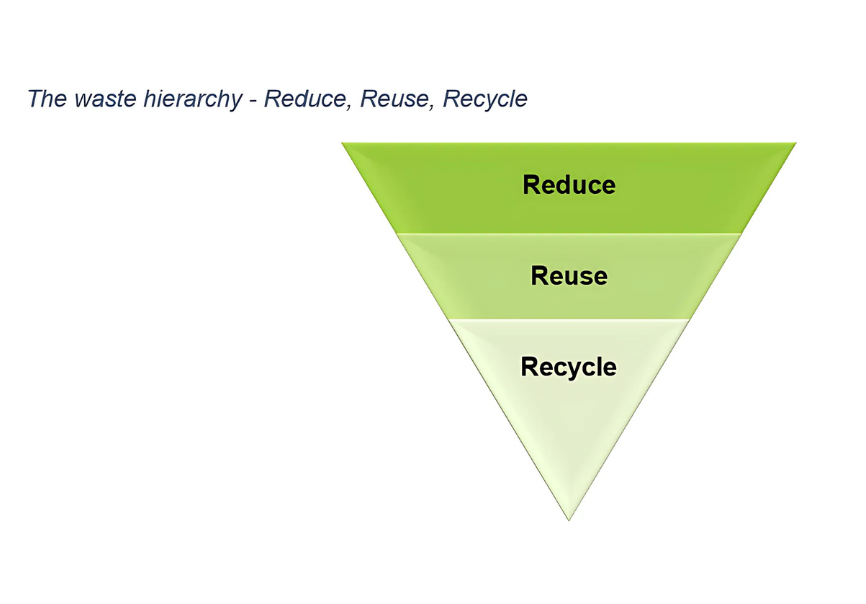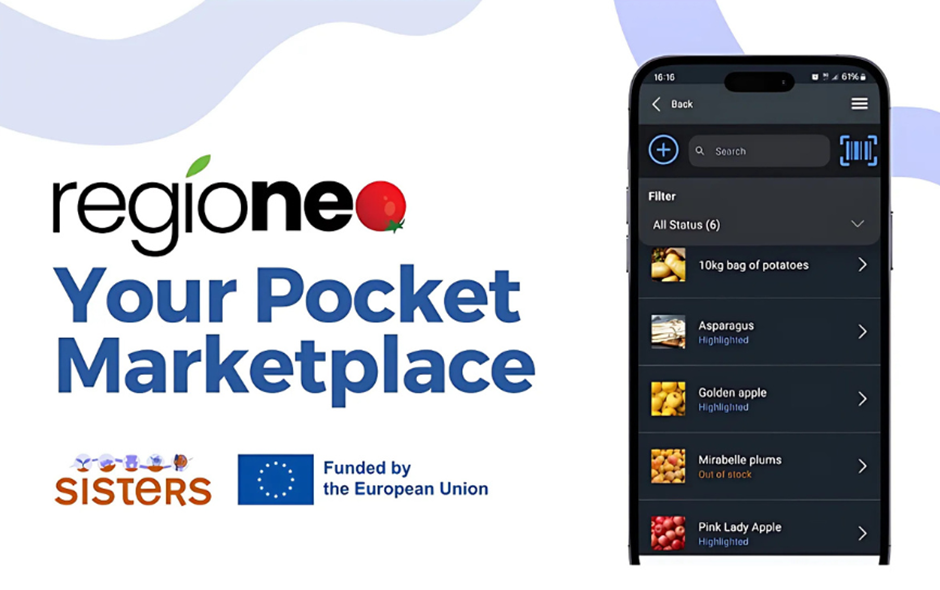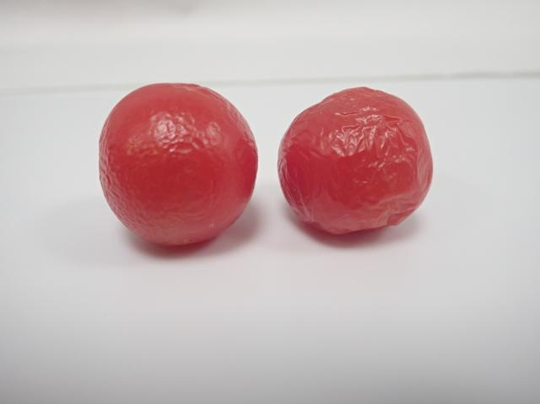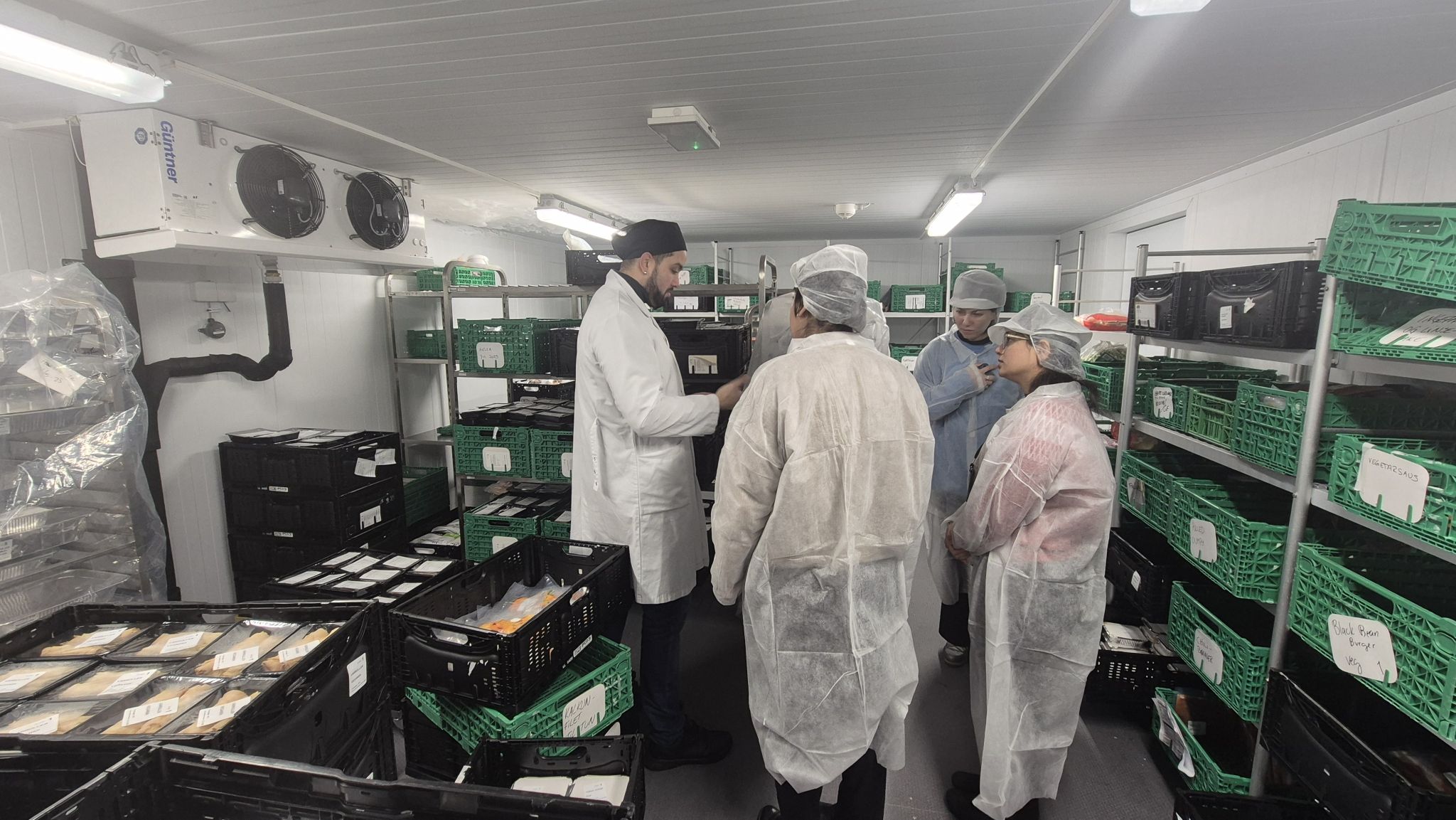Details
- Publication date
- Source
- Green Deal Projects Support Office
Introduction
It is estimated that 20% of all food that is produced in the European Union (EU) is wasted [1]. In 2022, this amounted to 132kg of food waste per person [2] which is the equivalent of 165 large loaves of bread each [3].
Food waste in the EU is defined as edible matter of plants, animals, and other living organisms, and associated inedible parts (e.g. bones or fruit cores) that have been discarded [4].
With 9.5% of people in the EU unable to afford a full meal every second day, this food waste is an ethical and social problem [5]. Food resources need to be better managed so that there is more available for human consumption and potentially reduce the cost of food [6].
Food waste also has an environmental footprint, including impacts such as carbon dioxide emissions, water use, land use, and environmental degradation. These impacts could be reduced through more efficient resource management of the European food system. For example, it is estimated that 16% of greenhouse gas emissions from the EU food system are due to food waste6, therefore, reducing food waste offers significant potential to contribute to achieving climate neutrality and fulfilling the goals of the European Green Deal.
Several Green Deal Call-funded projects in the Food and Heath working group have joined together to publish a joint policy statement on food waste to call for more ambitious reduction targets and more stringent measuring and monitoring of food waste across the entire food supply chain in the EU.
Identifying where food waste happens enables the development of strategies to tackle it. In the EU, most food waste occurs in the home (54%), with the remaining waste shared between primary producers (agriculture), food and drink manufacturers, distributors and retailers, and restaurants and other hospitality (see graph below) [7]. Furthermore, when food is wasted in the home or by hospitality and catering, it has a higher embedded environmental impact due to the journey that it has made along the way. From farm to fork, food has been grown, processed, packaged, transported, and stored, all of which tops up its environmental footprint, including carbon emissions.
Share of food waste per area of the food supply chain in the EU7

The 3Rs and food waste
How can we combat food waste in Europe? That was the question of focus in the 2024 European Week for Waste Reduction (EWWR). EWWR is a campaign that aims to raise awareness of and stimulate action for waste prevention and reduction in Europe and last year, it focused on food waste. It follows the waste hierarchy principles “reduce, reuse, recycle”, also known as the 3Rs (see figure below), with order of priority being given to the top of the upside-down triangle to the bottom. The scope of the waste hierarchy can also be expanded to the 5Rs: Refuse, Reduce, Reuse, Repurpose, Recycle. This article focuses on the 3Rs to streamline waste reduction efforts in the context of food waste.

Taking inspiration from the EWWR and looking at food waste through the lens of the 3Rs helps to identify and prioritise actions to combat food waste.
The food waste actions developed for EWWR 2024 can be viewed here
Reduce
Much of food waste avoidance focuses on reduction, which is the top priority in the 3Rs hierarchy. It often requires the least coordination and can be achieved through a change in corporate or individual behaviour. In many cases, reduction of food waste can lead to monetary savings and therefore can be a rewarding action. For example, a four-person household could save 400 EUR per year on average through food waste reduction efforts4. There are many ways in which food waste can be reduced along the whole food supply chain:
Producers can reduce food waste by creating local supply chains to sell produce that is fit for consumption but has been rejected by retailers for aesthetic or size reasons.
Consumers can reduce their food waste through meal planning and only buying what is needed, storing food as recommended to increase its shelf life, and eating leftovers.
Governments can design and implement methodologies to gather data and track how much food is being wasted across the whole food supply chain. Better data helps to target waste reduction activities and policies where they are most needed. In the EU, Member States are required to monitor and report food waste levels under the Waste Framework Directive.
Governments and food retailers can support households through raising awareness on food waste and providing support such as meal planning education and resources.
Although the majority of food waste occurs at home, there are ways in which food is sold that contributes to its wastage in households. Date labelling on food packaging as either “use by” or “best before” can confuse consumers and lead to food being discarded while it is still in good condition. The health of consumers is of the utmost importance and packaging must follow EU rules to provide date labelling for our protection, however, studies have found that the current system is often misinterpreted. The “use by” label must be marked on food products that are highly perishable and pose a danger to human health after they expire. On the other hand, the “best before” label must be marked on less perishable food products and represents the date until which the food remains at optimal quality when correctly stored. Food is often edible for a significant amount of time after the “best before” date, yet due to misinterpretation, is discarded by households. There are ongoing discussions to brainstorm how “best before” labels could be modified through EU legislation to enhance understanding, but so far, no agreements have been reached [8].
Up to 10% of food waste in the EU is connected to date labelling [9]
Reuse
Reuse is the second preference in the waste hierarchy. There are similarities between reuse and recycle and indeed some crossover in the context of food waste. However, reuse can be defined as the redistribution of edible food or revalorisation of food that is not fit for consumption, either through its repurposing as a whole, a byproduct or by extracting high-value compounds [10]. There are various ways in which food can be reused, both food that is fit for consumption and non-consumable products:
Households, food service outlets such as restaurants and cafés, and food retailers such as supermarkets, who together are responsible for 73% of food waste, can make use of foodbanks and food redistribution networks to link their food surplus to those who would be able to make use of it. This action sits in between reduce and reuse and should be a high priority.
Certain foods that are not fit for human consumption may be used as animal feed, subject to EU requirements [11].
Food products with high-energy sugar, oil and/or starch content such as pasta, cereals, bread and biscuits can be processed as animal feed.
Broken, misshapen, or surplus products retain their nutritional value but do not meet commercial food standards, so can be processed as animal feed.
Waste streams from manufacturing can be processed to extract valuable compounds that can be used as ingredients in chemical industries such as cosmetics, skincare, and food processing.
Recycle
Recycling is also a waste management strategy. It makes use of food waste that would otherwise end up in landfill and produce greenhouse gas emissions, such as methane. It applies to the residual food waste that either cannot be reused or is not reused. Recycling can include:
Suitable animal or plant-based matter leftover from production, manufacture and retail that cannot be used for the extraction of high-value compounds can be processed to make fertiliser.
Similarly, organic matter can be processed to produce biofuels such as biogas.
Households can have their food waste (such as discarded peels or expired food) collected by municipal waste collectors for municipal composting or manage their own compost bin for gardening.
Green Deal Call-funded projects and their contribution to the 3Rs
Under the Green Deal Call, Research and Innovation projects are tackling food waste in Europe under all aspects of the food waste hierarchy. This section explores how the Green Deal Call-funded projects are demonstrating the 3Rs in action.
The SISTERS project is targeting food loss and waste through different work plans that address the whole food value chain from producer to consumer. Overall, it aims to mitigate food loss and waste by 27.4% and CO2 emissions by 20% across their areas of focus.
One way in which the SISTERS project is approaching the reduction of food waste is through a novel labelling system for food products to help consumers make informed choices about the food that they buy. The labelling will use a QR code that can easily be scanned by consumers to provide important information to consumers before they buy food products. This information will include details on how to properly store and preserve the food, its country of origin, and details on the economic and environmental costs of wasting the product. The ultimate aim is to give consumers the information they need to stimulate food waste reduction behaviour.
SISTERS is also addressing the reuse aspect of the food waste hierarchy through connecting farmers to local consumers to sell their food surplus that may otherwise be discarded. Due to the way the food retail market is structured, farmers are often required to produce more food than they are able to sell to large retailers. Retailers refuse produce that is fit for consumption but may not fit the shape and size requirements that they place on produce. The Regioneo e-commerce app, developed by SISTERS, is helping farmers to create a platform to sell their food locally. Farmers can use the platform to display their catalogue of products, organise orders and fulfilment, and keep their customers up to date. It supports producers by helping them boost their sales through a profitable online sales platform. The app is the first of its kind in Europe and acts as an innovative solution to address food loss and waste at the primary production level. The app has the added benefits of strengthening local economies and providing fresh and quality produce to consumers.

© SISTERS 2024
ZeroW is developing solutions that address the European food system to move it away from its high-waste nature, towards a zero-food-waste supply chain. The project has 9 living labs that demonstrate its targeted innovations across the whole supply chain. Throughout its work, ZeroW covers all aspects of the 3Rs: reduce, reuse, and recycle.
In its living lab “Ugly food identification” ZeroW is targeting food that is discarded for not meeting the aesthetic standards that retailers place on produce such as fruit and vegetables. This produce is often perfectly fit for consumption and during the selection process can be misidentified and therefore fit for retail food can be wasted. ZeroW have developed improvements to optimise the selection process for tomatoes and reduce waste. The new techniques use multi-sensory AI machinery that processes 300,000 fruits per hour and are implemented earlier in the food chain [12]. The machinery assesses the fruits’ shelf life and condition and separates the fruits into three categories: damaged (removed to avoid impacting the shelf life of surrounding fruit); not compliant (separated and directed towards alternative processing methods to ensure that they are used elsewhere); and compliant (packaged and delivered to retailers). Non-compliant fruit can be reused for alternative food processes such as canning.

© ZEROW 2024
In its “Informing and nudging consumers” living lab, ZeroW are encouraging small changes in consumer behaviour that can lead to big impact. Currently, most food waste occurs in households and there is a lack of engagement in reducing food waste. ZeroW aims to engage consumers in through their choices and behaviours. The primary obstacles are a general lack of awareness of the food waste that happens before it reaches retailers and consumers’ dietary needs creating habits in their decision-making. To combat the lack of awareness that consumers have, ZeroW is creating food labels that empower consumers to integrate knowledge and transparency into their choices. The labels contain information on nutritional value, embedded GHG emissions, and average food waste produced by consumers after buying the product. Each product will be given an overall score from A-E and a QR code on the food packaging can be scanned to access the information. Providing consumers with simple to understand information can help them make choices that consider environmental aspects. Furthermore, to help consumers make choices that consider food waste alongside their dietary needs, ZeroW are developing healthy meal plans to tackle improper planning which leads to food waste. The meal plans reduce the amount of food waste using mathematical models.
The ”FLW valorisation through algae production” living lab ZeroW are developing a process to transform retail food waste into a powder that can be sold as a culture medium for micro-algae. The micro-algae can then be used in the creation of biopolymers, the cosmetics industry, or even as food. The methodology by ZeroW allows retailers to start the process in their retail stores in a simple manner.
ENOUGH aims to reduce greenhouse gas emissions from the food sector and is contributing to the achievement of the EU Farm to Fork strategy. As part of its work, the project is focusing on the reduction of food waste by developing a digital tool that maps food loss and waste between any two stages of the supply chain. The tool helps to identify which products are wasted, what their volume is, and why they are being wasted. The tool is automated and therefore reduces the labour requirement and it will be analysed to determine its compatibility with tools that are already in use in the food industry for easy implementation.
In particular, ENOUGH has been focusing on food waste in Norway as a case study and quantification of the greenhouse gas emissions associated with food waste. Actions so far have included investigating the existing digital tools for mapping and logging of food loss and waste, and forming agreements with actors within the Norwegian food sector to register volumes and causes of food waste. For example, the project is collaborating with Norway’s largest production kitchen owned by the Trondheim municipality in Norway and is assisting in the mapping of food loss and waste volumes and its causes. In 2025, the work will include using digital weighing equipment to obtain data and estimating the GHG emissions. Based on the mapping, new measures for waste reduction in addition to the existing ones will be recommended.
Trondheim Municipality’s production kitchen supplies 2,500 meals daily to nursing homes, schools, municipal and private institutions, and kindergartens [13].
ENOUGH have written an article that gives further insight into its work on food waste in Norway, which covers topics such as food labelling and changing consumer behaviour, which can be read here.

© ENOUGH 2024
EcoeFISHent is working to create circular economy value chains in the fishing sector through valorising side streams from fish processing. Side streams from fish processing are the parts of the fish that are not used for food consumption and may otherwise be discarded, which can account for between 20-80% of the mass of the fish depending on species. Its work fits into the reuse and recycle aspects of the food waste hierarchy, focusing on the valorisation of what would otherwise be waste and biodegradation of some products to soil or fertiliser. The project is innovating four new circular value chains from fish processing waste. EcoeFISHent is developing sustainable and efficient methods for biomass pre-treatment and extraction to obtain bioactive ingredients for use in produces such as skincare and biodegradable food packaging. The value chains using fish processing side streams are:
From fish to food – food supplements can be created using omega-3 and collagen.
From fish to cosmetics – skincare products can be created using omega-3 and collagen.
From fish to pack – compostable packaging for food can be created using gelatine.
From fish to soil – fertiliser, oil and chitin which can be used as soil building components can be formed using fish larvae.
The project is demonstrating actionable and valuable supply chains that make use of organic matter that would otherwise be disposed as waste.

© EcoeFISHent 2024
Visit the EcoeFISHent website.
Conclusion
Food waste is an environmental, social, and ethical issue in the European Union that needs to be addressed. Reducing food waste offers an opportunity to contribute to achieving the EU’s goal of net-zero by 2025. Looking at food waste through the lens of the 3R principles (reduce, reuse, recycle) can help to identify and develop food waste management strategies. The EU Green Deal Call is funding projects that work on different aspects of food waste management and their work demonstrates the 3Rs in action.
[1] ZeroW, “Facts about FLW”. Available at: https://www.zerow-project.eu/facts-about-flw
[2] Eurostat, “Food waste: 132 kg per inhabitant in the EU in 2022”, 2024. Available at: https://ec.europa.eu/eurostat/web/products-eurostat-news/w/ddn-20240927-2
[3] Based on one large loaf of bread weighing 800g.
[4] European Commission, “Frequently Asked Questions: Reducing Food Waste in the EU”. Available at: https://food.ec.europa.eu/food-safety/food-waste/frequently-asked-questions-reducing-food-waste-eu_en
[5] Eurostat, “Inability to afford a meal with meat, chicken, fish (or vegetarian equivalent) every second day”, 2024. Available at: https://ec.europa.eu/eurostat/databrowser/view/ilc_mdes03/default/table?lang=en&category=livcon.ilc.ilc_md.ilc_mdes
[6] European Commission, “Less food waste could bring lower EU food prices and decrease greenhouse gas emissions”, 2023. Available at: https://joint-research-centre.ec.europa.eu/jrc-news-and-updates/less-food-waste-could-bring-lower-eu-food-prices-and-decrease-greenhouse-gas-emissions-2023-07-06_en
[7] Eurostat, “Food waste and food waste prevention – estimates”, 2024. Available at: https://ec.europa.eu/eurostat/statistics-explained/index.php?title=Food_waste_and_food_waste_prevention_-_estimates#:~:text=Household%20food%20waste%20represented%2032,54%25%20share%20of%20the%20total.
[8] Food Times, “‘Best before … often good after’. Changing labels to reduce food waste?”, 2023. Available at: https://www.foodtimes.eu/consumer-en/best-before-often-good-after-changing-labels-to-reduce-food-waste/
[9] European Commission, “Date marking and food waste prevention”. Available at: https://food.ec.europa.eu/food-safety/food-waste/eu-actions-against-food-waste/date-marking-and-food-waste-prevention_en
[10] European Commission, “The European Commission’s Knowledge Centre for Bioeconomy”, 2021. Available at: https://food.ec.europa.eu/document/download/d53de425-9468-4d56-82e0-f8d14a42ba28_en?filename=fw_lib_stud-rep-pol_ec-know-cen_bioeconomy_2021.pdf
[11] EFPPA, “Food safety EU Regulations and Directives”. Available at: https://effpa.eu/our-focuses/feed-safety/
[12]https://www.zerow-project.eu/innovation/ugly-food-identification
[13] ENOUGH LinkedIn Post, December 2024. Available at: https://www.linkedin.com/posts/euenoughproject_enoughemissions-flw-activity-7275776399930482688-We5g/

